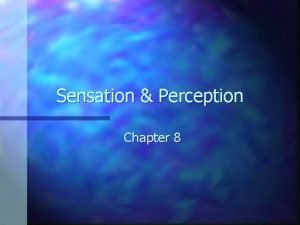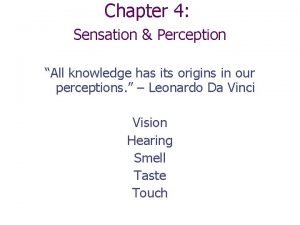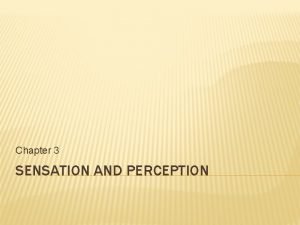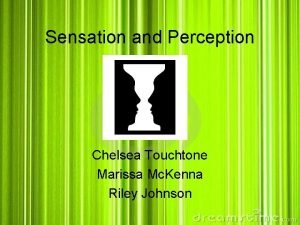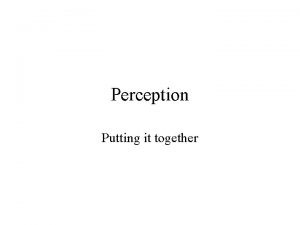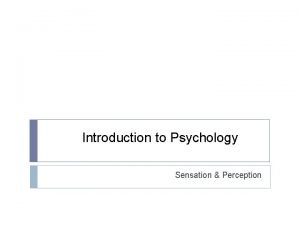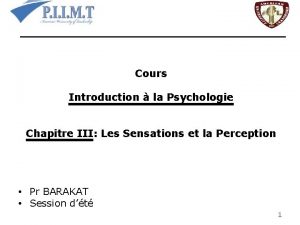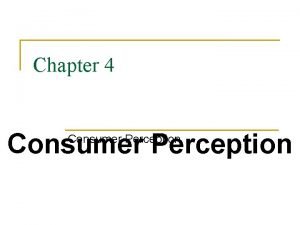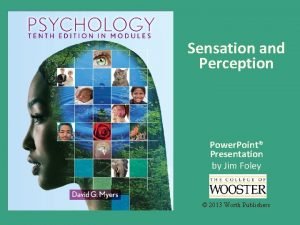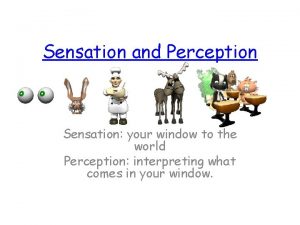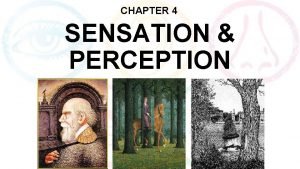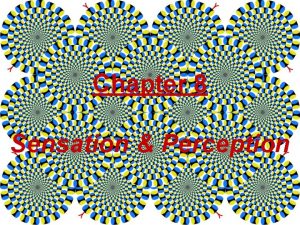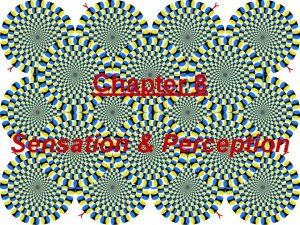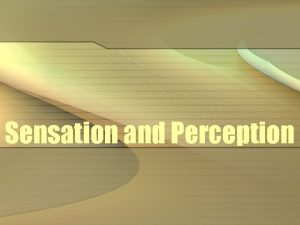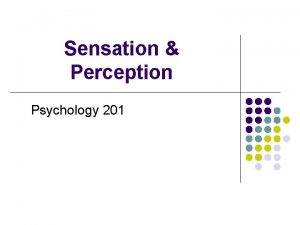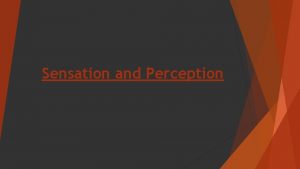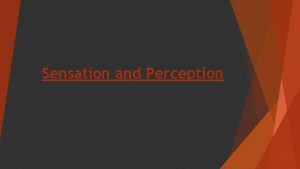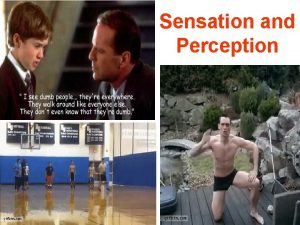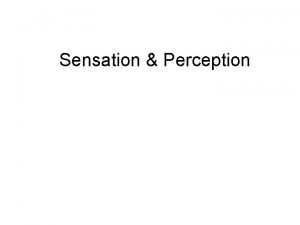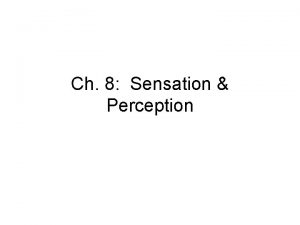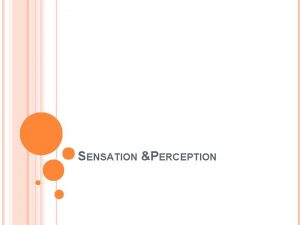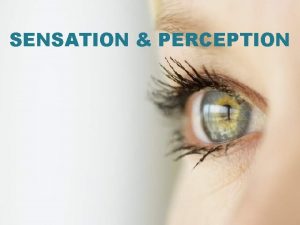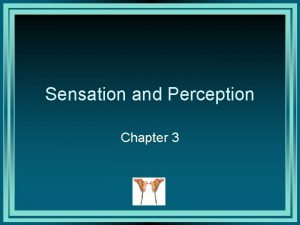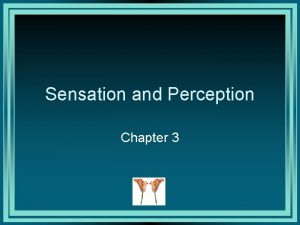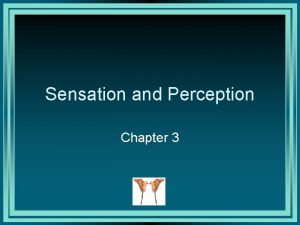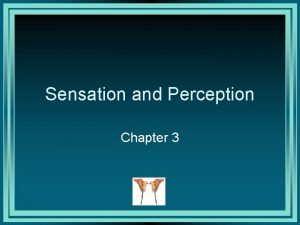Visual Perception Chapter 3 Sensation Perception Sensation Occurs



















- Slides: 19

Visual Perception Chapter 3

Sensation & Perception Sensation: Occurs when our sensors (internal & external) detect & respond to information. Perception: assigning meaning to the information that we sense. This occurs in the brain and is a personal interpretation. When you view the next 3 images, your eyes will gather information, then you brain will select certain parts of that information, organise the parts and finally interpret and evaluate them.







Role of the eye in Visual Perception View clip on the eye

Reception, Transduction, Transmission Reception: photoreceptors (rods & cones) in the retina detect light stimulus Transduction: Light energy (EM) is converted into electrochemical energy Transmission: Electrical message is sent to the visual cortex in the brain via the optic nerve. AT 2: From Light To Lobe Movie clip: Sensation & perception

Perception: Gestalt principles Gestalt – the way we organise parts into a whole We mentally ‘fill in’ the parts that we can’t see. 1. figure-ground organisation Object is the figure, everything else is background Needs a line or boundary (contour) Contour is part of the object

Perception: Gestalt principles 2. Closure tendency to mentally fill in or ignore gaps in the object 3. Similarity Tendency to group similar features together

Perception: Depth principles 4. Proximity tendency to perceive parts that are close together as belonging together.

Perception: Depth principles Ability to accurately estimate the distance of an object (can see 3 -D) 1. Binocular (requires both eyes) Convergence Retinal disparity

Perception: Depth principles Ability to accurately estimate the distance of an object (can see 3 D) 2. Monocular (requires only one eye) Accommodation Pictorial Cues linear perspective interposition texture gradient relative size height in the visual field


Perception: Perceptual constancies 3. Perceptual Constancies shape constancy size constancy brightness constancy

Explorations http: //faculty. washington. edu/chudler/chvision. html http: //academics. tjhsst. edu/psych/old. Psych/perception/ Folio Activity: Stroop Effect http: //faculty. washington. edu/chudler/words. html

Perceptual Set
 Chapter 5 sensation and perception
Chapter 5 sensation and perception Chapter 3 sensation and perception
Chapter 3 sensation and perception Chapter 6 sensation and perception
Chapter 6 sensation and perception Copyright
Copyright Kinesthetic sense
Kinesthetic sense Chapter 6 sensation and perception
Chapter 6 sensation and perception Chapter 4 sensation and perception
Chapter 4 sensation and perception What is sensation
What is sensation Gestalt visual perception
Gestalt visual perception Perceptual set ap psych
Perceptual set ap psych Example of perception
Example of perception Perception
Perception Perceptual system
Perceptual system Sensation and perception
Sensation and perception Exposé sur la sensation en psychologie
Exposé sur la sensation en psychologie Absolute threshold consumer behavior
Absolute threshold consumer behavior Perception vs sensation
Perception vs sensation Webers law
Webers law Opponent process theory
Opponent process theory Old woman young woman illusion
Old woman young woman illusion





